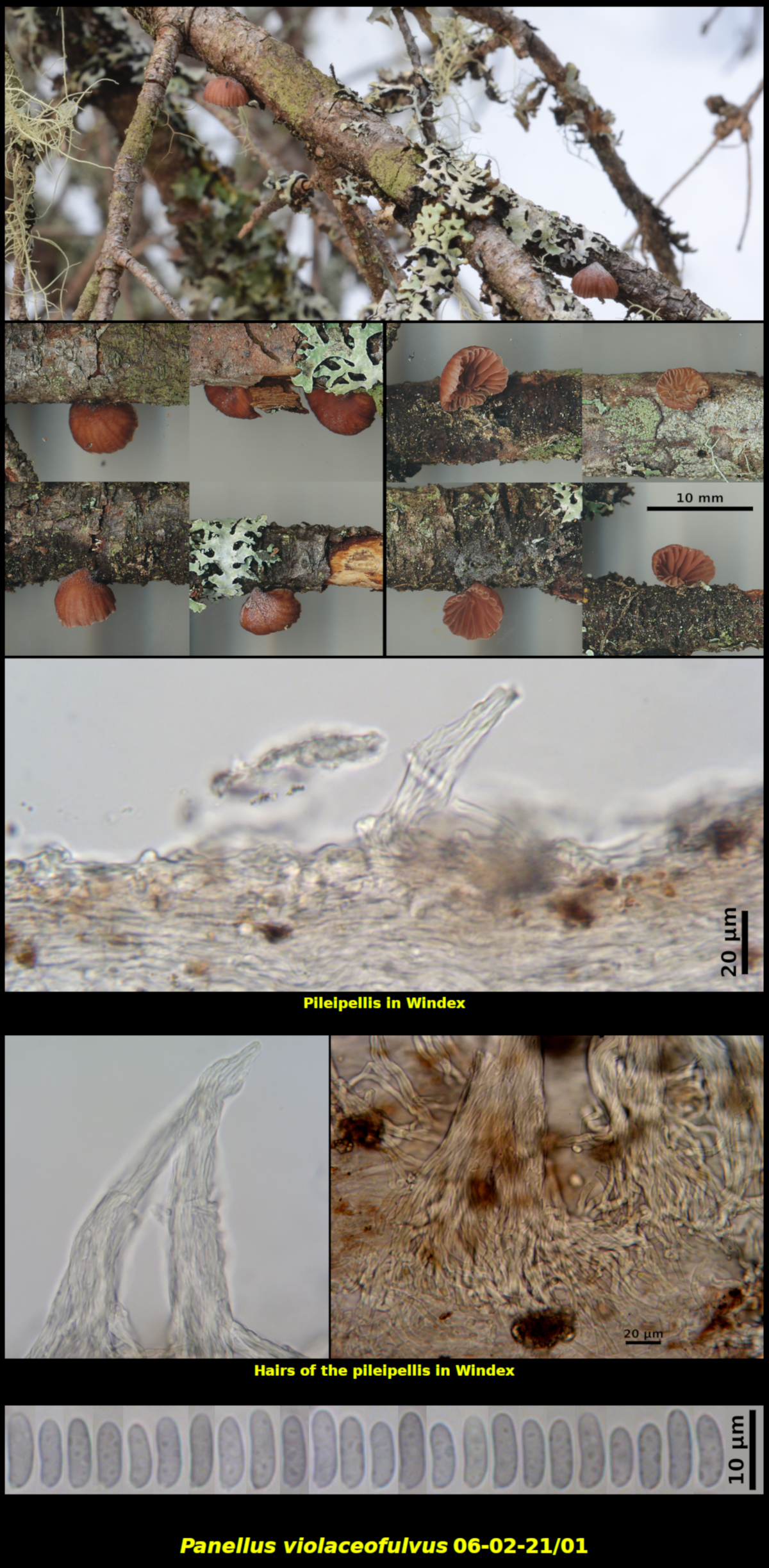Fleshy Fungi of New Brunswick >>
Panellus violaceofulvus
Panellus violaceofulvus (Fr.) Singer

Scattered to gregarious (13) on small dead branches of a fallen Abies balsamea, with branches above the snow cover – Little Lepreau, New Brunswick (06-02-21/01).
Pileus convex-hemispherical, smooth, without an umbo, striate from the margin to the centre, dry, pubescent with short white hairs in central areas, nearly glabrous toward the margin, dull reddish brown (HSV350:40:40-50), 4-8 mm in diameter. Stipe lacking, with pileus attached to the substrate on its upper surface, with attachment sublateral to nearly central. Lamellae dull orange yellow (HSV40:05:96) to concolorous with the pileus, close, not marginate. Veil lacking. Flesh white below the dark reddish brown pileipellis, with a nondescript odour and taste.
Basidiospores white in spore print, cylindrical to slightly allantoid, smooth, amyloid, 7.4-10.2 x 2.8-3.5 μm, Q = 2.46-3.35 (average[47]: 8.8 x 3.1 μm, Q = 2.86. Hymenial cystidia not seen. Basidia 4-spored, clavate, with a basal clamp connection. Pileipellis a thick cutis, with hyphae thick-walled and elastic, brown, produced above the interwoven hyaline tramal hyphae. Vestiture of the pileipellis most abundant toward the centre of the pileus, composed of tapering fascicles of hyphae similar to those of the pileipellis, hyaline, arising as outgrowths of the pileipellis, 75-400 μm long. Hyphae mostly thick walled and elastic, not dissolving to form a gel, with a clamp connection at the septa.
Panellus violaceofulvus is the quintessential winter mushroom in our region. There are no collections of it in the New Brunswick Museum made during the warmer months. It is consistently found on dead branches of conifers, fir in our region, where the bark is still intact and above the level of the snow cover.
Jančovičová et al. (Folia Oecologica 43: 164-175. 2016) have published a thorough and detailed accont of P. violaceofulvus and the very similar P. ringens in Europe. Apparently there has often been confusion over the distinction between the two species. Both are known in North America and both occur in the colder months in the same geographical regions. However, while P. violaceofulvus is always found on branches of conifers, P. ringens grows mainly on willows and alders. The two species are difficult to distinguish macroscopically but differ significantly on microscopic features. P. violaceofulvus generally lacks cheilocystidia and has basidiospores 6-10 x 2-4 μm, while P ringens regularly has cheilocystidia and has basidiospores 4-8 x 1-2 μm.
Photograph: D. Malloch (06-02-21/01).